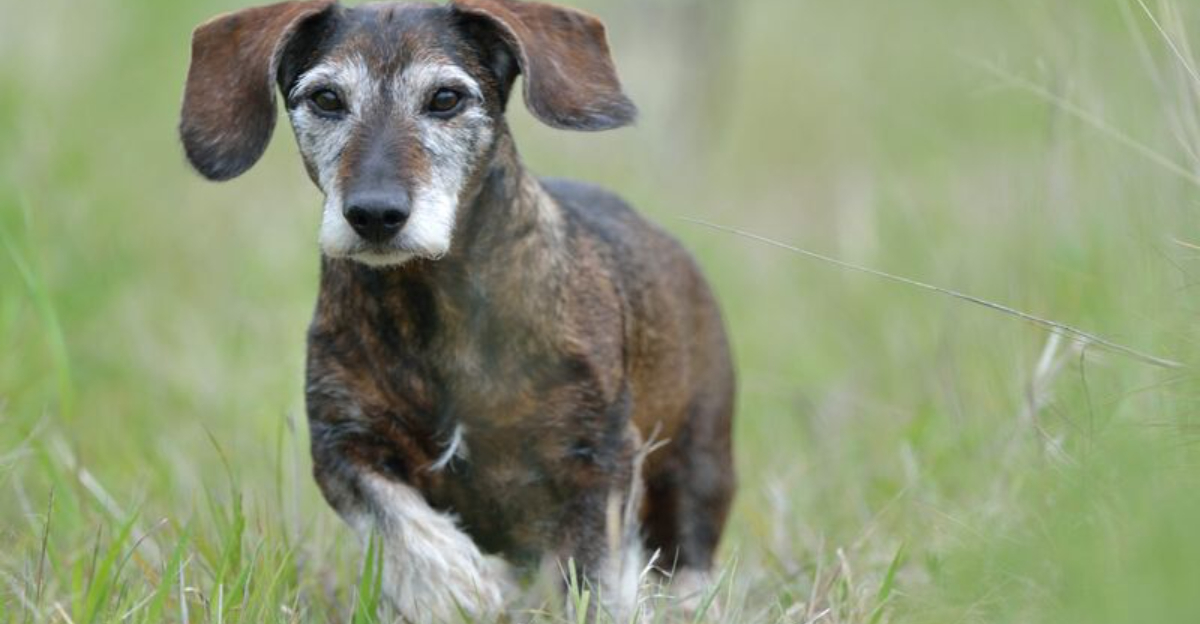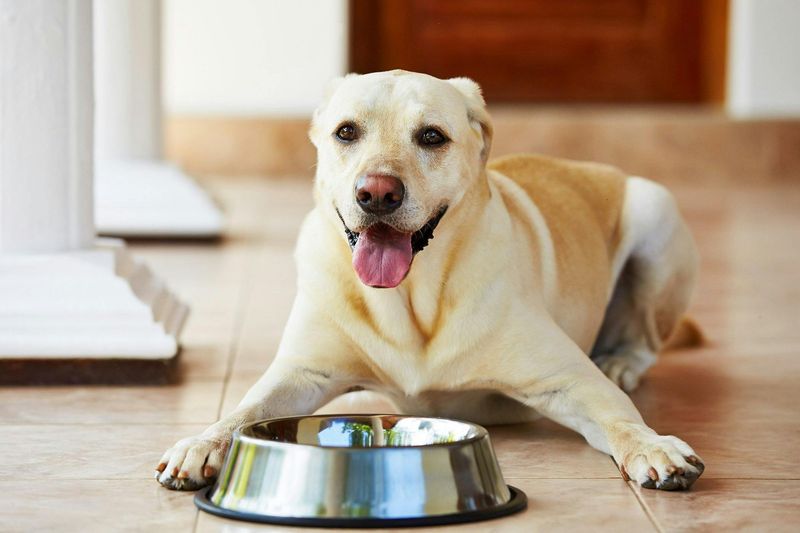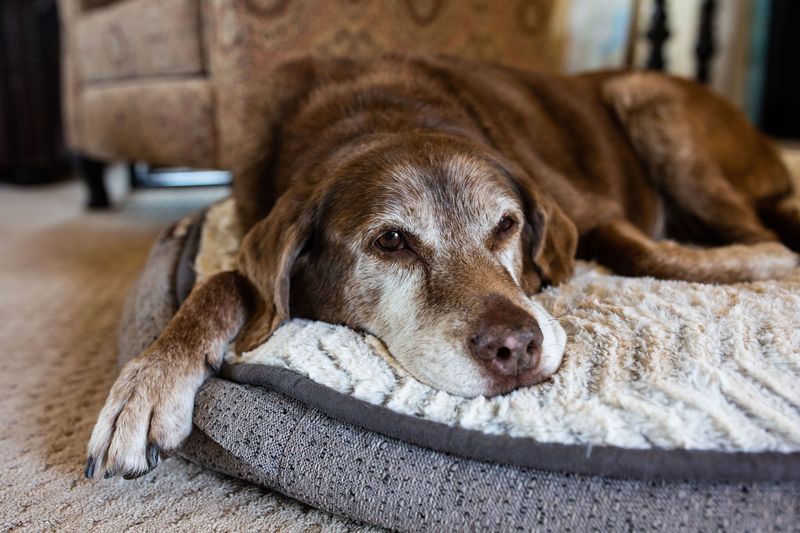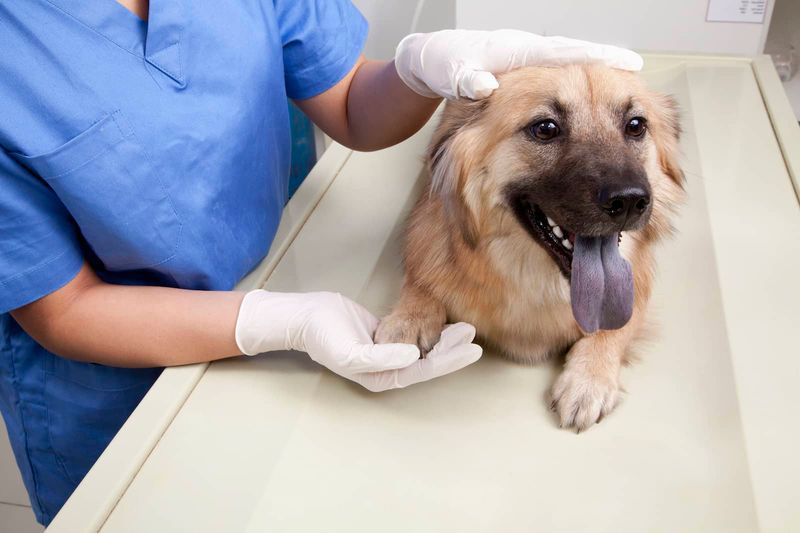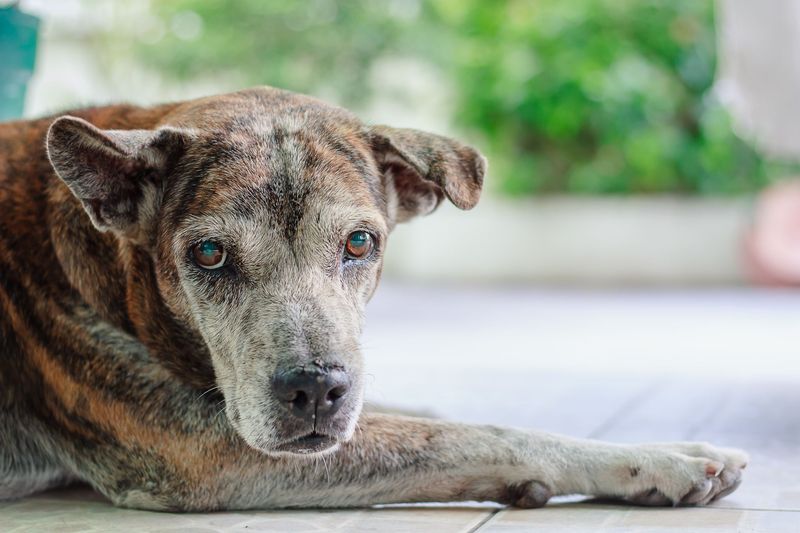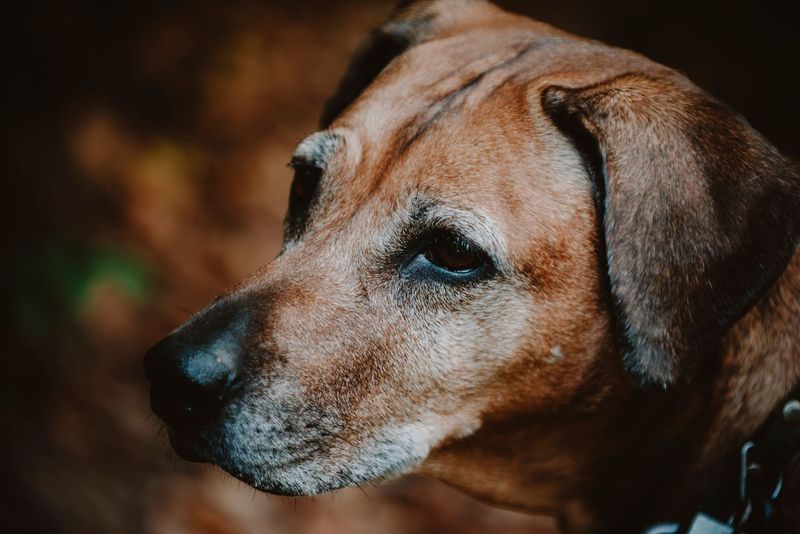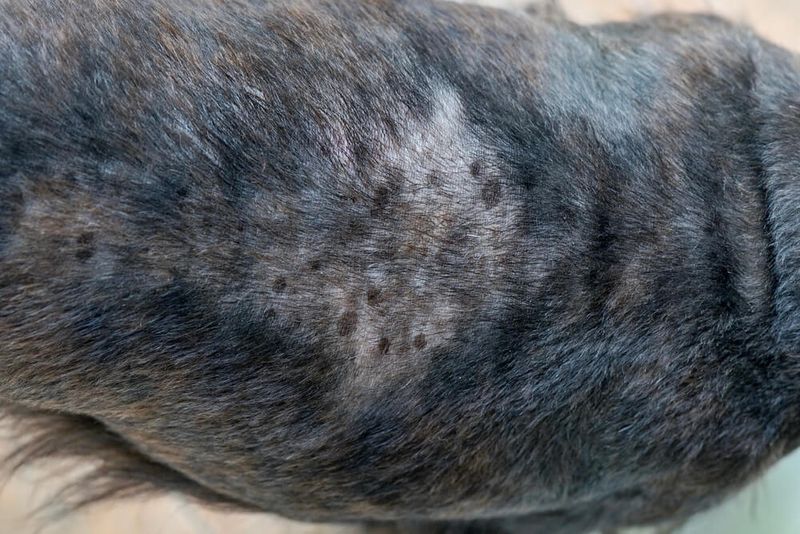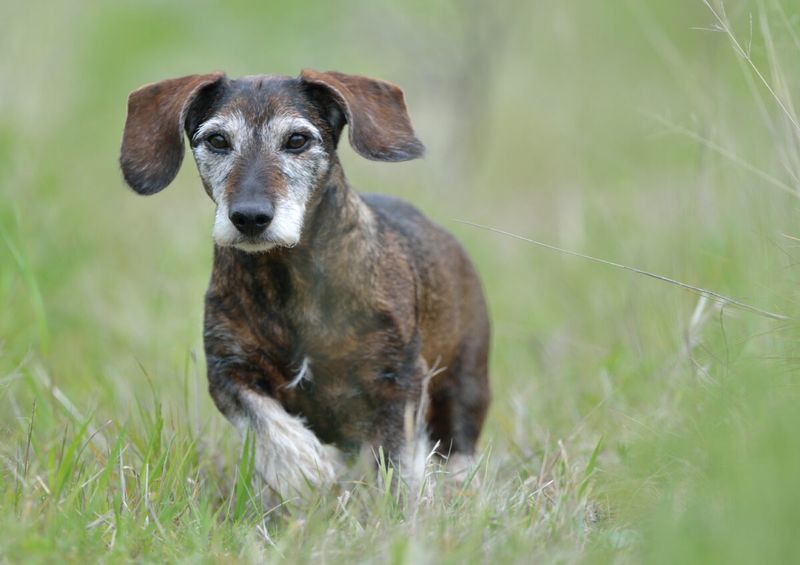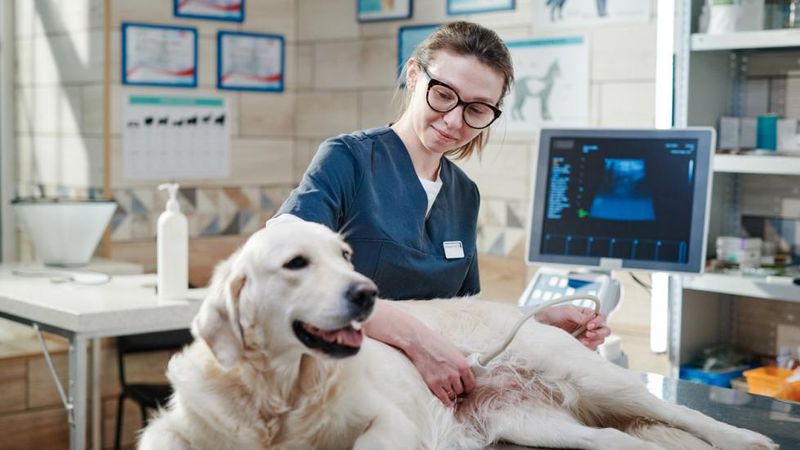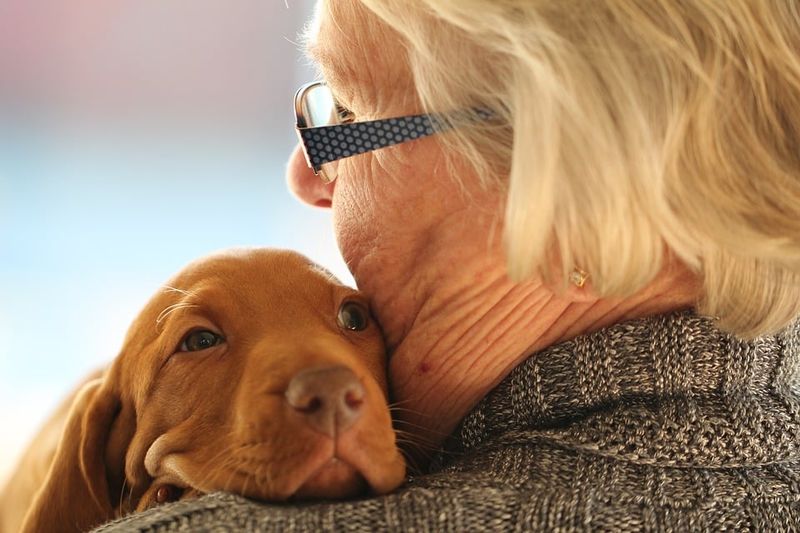Recognizing the signs that a dog is nearing the end of its life allows pet owners to provide the necessary care and support. Understanding these signs can help make a dog’s final days peaceful and comfortable.
Reduced Appetite
As dogs approach their final days, a noticeable reduction in appetite may occur. This change can be attributed to a decrease in energy needs and an overall slowing down of bodily functions.
It’s quite common for older dogs to show less interest in their meals, sometimes skipping them altogether.
Pet owners can try offering smaller, more frequent meals or special treats to stimulate interest. Adding warm broth to food can also enhance flavor and aroma, appealing to a dog’s senses. Consulting a veterinarian can provide additional insights into dietary adjustments.
Lethargy
Lethargy is a common sign in aging dogs entering their twilight years. Their playful spirit and boundless energy slowly give way to prolonged rest periods.
You’ll notice your furry friend spending more time lounging around, perhaps in their favorite sunny spot or cozy bed.
This behavior is a natural progression as dogs age and their energy reserves dwindle. Allowing them to rest and providing a comfortable environment can help them feel secure. Offering gentle walks can keep them engaged without exhausting them.
Difficulty Breathing
Breathing difficulties may surface as dogs age, signaling a decline in their respiratory health. You may observe labored or shallow breathing, which can be distressing for both the pet and owner.
These changes could be due to underlying health issues or simply the body’s slowing functions.
It’s essential to maintain a calm environment, minimizing stressors that could exacerbate the situation. Consulting with a veterinarian can provide guidance on managing these symptoms, ensuring your dog’s comfort and well-being.
Incontinence
Incontinence is a tender concern for many pet owners as their dogs reach their life’s later chapters. Accidents may become frequent, often surprising the dog as much as the owner.
This can be a result of weakened muscles or control loss, common in older age.
Providing easy-to-clean bedding and investing in absorbent pads can make cleanup easier. A compassionate approach involves understanding these mishaps are beyond their control. Consulting with a veterinarian about potential treatments or aids can enhance your pet’s quality of life.
Loss of Mobility
Mobility loss in senior dogs is a poignant reminder of aging. Once active pets may struggle with stairs or walks, showing hesitance or unsteadiness.
This challenge can stem from arthritis or other age-related conditions affecting joints and muscles.
Supporting your dog with ramps, softer bedding, or harnesses can aid in movement. Gentle, regular exercise helps maintain some mobility. Consulting a vet for pain management and exercise plans can offer relief and support, allowing your pet to continue enjoying small adventures.
Confusion and Disorientation
Cognitive decline in dogs can manifest as confusion or disorientation. You might notice your pet wandering or staring blankly, struggling to recognize familiar faces or routines.
Such behaviors can be unsettling, reminiscent of canine dementia or cognitive dysfunction syndrome.
Maintaining a consistent routine and environment can help reduce anxiety. Toys and games that stimulate the mind may slow cognitive decline. A vet’s advice could provide strategies to manage symptoms and enhance your dog’s comfort.
Changes in Behavior
Behavioral shifts often accompany a dog’s aging process. An ordinarily social dog may become withdrawn, while a usually independent pet might seek constant companionship.
Such changes can be due to discomfort, pain, or confusion brought about by aging.
Observing and adapting to these shifts with patience and empathy is key. Encourage interaction in ways that are comforting and non-stressful. Keeping routines and offering extra affection can reassure your pet during this transitional period.
Decreased Coordination
Aging can affect a dog’s coordination, leading to unsteadiness or difficulty in navigating their environment. You might see them stumble or hesitate more often.
This can be attributed to declining neurological or muscular health.
Ensuring a safe space, free of obstacles, can prevent accidents. Carpeting or rugs offer traction, making movement easier. Consulting a veterinarian can help identify any treatable conditions contributing to this change and provide guidance on supportive care.
Dull Coat and Skin Issues
As dogs grow older, their once-vibrant coats may lose luster, and skin might become dry or flaky. This visible change is a reflection of internal aging processes.
Nutritional deficiencies or underlying health issues often contribute to these conditions.
Regular grooming and a balanced diet rich in fatty acids can improve coat health. A veterinarian can recommend supplements or treatments to address skin concerns, ensuring your pet remains comfortable and pampered.
Seizures
Seizures in older dogs can be alarming, often caused by neurological changes. Witnessing your pet in such distress is heart-wrenching.
Episodes may vary in intensity, from mild twitching to severe convulsions.
It’s crucial to remain calm, keeping your dog safe from harm during these moments. Consulting a vet is paramount to identify underlying causes and explore treatment options. Supportive care and medication can help manage seizures, ensuring your pet’s dignity and comfort.
Keeping Them Comfortable
Providing comfort in their twilight years is a loving way to support your aging dog. A soft, warm bed can be a haven of rest, offering both physical support and emotional security.
Consider the placement of their bed, ensuring they are close to family activities but away from noise and disruptions.
Adding familiar scents, like a cherished blanket or toy, can enhance comfort. Temperature control in their resting area prevents discomfort from overheating or chills, making sure they rest peacefully.
Gentle Exercise and Mental Stimulation
Maintaining activity is vital for an older dog’s physical and mental well-being. Gentle exercises, like short walks, offer health benefits without overwhelming them.
Mental stimulation through interactive toys or simple training games can engage their mind, slowing cognitive decline.
Balancing exercise with rest is key to preventing exhaustion. Understanding your dog’s limits ensures activities are enjoyable and beneficial. Keeping your furry friend engaged promotes happiness and vitality in their golden years.
Frequent Vet Check-ups
Regular veterinary check-ups are crucial for monitoring the health of senior dogs. These visits can detect changes or emerging health issues early, allowing for timely intervention.
Building a trusting relationship with your vet facilitates open discussions about your pet’s needs and care options.
Routine exams can include blood tests, dental checks, and monitoring weight and mobility. Staying informed about your dog’s health enables you to make decisions that enhance their quality of life, providing peace of mind for both you and your furry companion.
Emotional Support and Presence
Emotional support is a profound gift you can give your aging dog. Simply being present, offering a comforting touch or soothing voice, can alleviate anxiety and provide reassurance.
Spending quality time together strengthens your bond, creating cherished memories.
Recognizing your dog’s emotional needs and responding with love and patience conveys care that words cannot express. In these tender moments, your presence becomes a source of strength, ensuring your beloved pet feels safe and cherished as they navigate their final journey.
